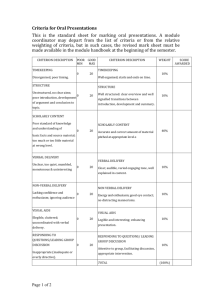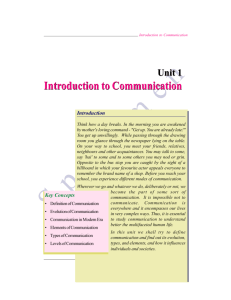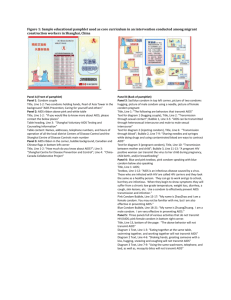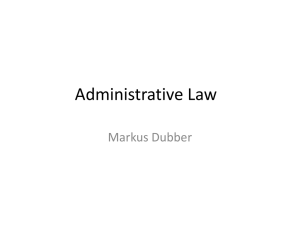- Department of Community Medicine ACME Pariyaram
advertisement
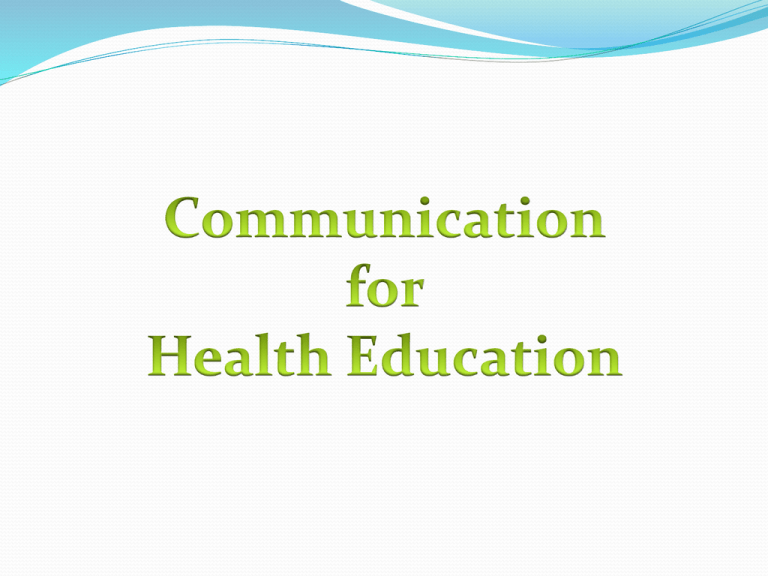
Communication : regarded as two way process of exchanging or shaping ideas, feelings and information. Ultimate goal of all communication is to bring about a change in the desired direction of the person who receives the communication – cognitive (increase in knowledge), affective(change in existing pattern of behavior & attitude) & psychomotor (acquire new skill) Communication Process : Complex process having five components : Sender (source) Receiver (audience) Message (content) Channel (medium) Feedback (effect) Sender : originator of the message must know his objectives, should be clearly defined. his audience: its interests & needs his message channels of communication his professional abilities and limitation Receiver: single person or group Two types Controlled audience : one which is held together by common interest, homogeneous Uncontrolled audience : one which has gathered together from motives of curiosity. - the more homogenous the audience is, the greater are the chances of an effective communication Message: is the information which the communicator transmits to his audience to receive, understand, accept and act upon. transmitting right message to the right people at right time is very crucial factor in successful communication. Channels of Communication : Interpersonal Mass Media Folk Media Feed back: Reaction from the audience May reject if message is not clear or not acceptable Hence opportunity to sender to modify message and render it acceptable. Inter-personnel communication- immediate Mass communication- takes time Feedback is obtained through opinion polls, survey and interviews Types of Communications: One way communication Two way communication Verbal communication Non – verbal communication Formal and Informal communication Visual communication Tele communication and internet One way communication: (Didactic Method) E.g. – lecture method in class rooms Draw backs - knowledge is imposed - learning is authoritative - little audience participation - no feedback - does not influence human behavior Two way communication (Socratic Method): Audience may raise questions Add their own information, ideas and opinions to the subject Learning is active and democratic More likely to influence behavior than one – way communication Verbal communication: Word of mouth, traditional way It is persuasive Non – verbal communication Communication without words Bodily movements, postures, gestures, facial expressions Silence is a non – verbal communication It can speak louder than words Formal communication: Follows lines of authority Informal communication: E.g.: gossip circles May be more active, if formal channels do not cater to the information needs Visual communication: Charts Graphs pictograms Tables maps Posters Telecommunication and internet: Communication over distance Radio, TV, internet, telephone, telegraph etc Point to point telecommunications systems (telephone, telegraph) are closer to interpersonal communications Health Communication : Health Communication has to cater the following needs, Information Education Motivation Persuasion Counselling Raising morale Health development Organization Health Education : A process aimed at encouraging people to want to be healthy , to know how to stay healthy , to do what they can individually and collectively to maintain health, and to seek help when needed. Aims & objectives of health education: To encourage people to adopt & sustain health promoting lifestyles and practices To promote the proper use of health services provided to them To arouse interest, provide new knowledge, improve skills & change attitudes in making rational decisions to solve their own problem To stimulate individual & community self reliance & participation to achieve health development Approach to Health Education : Regulatory approach (Managed prevention) Service approach Health education approach Primary health care approach Models of Health Education : Medical Model Motivational Model Social Intervention Model Medical Model: Dissemination of health information based on scientific facts In this model social, cultural and psychological factors were thought to be little or no importance Did not bridge the gap between knowledge and behavior Motivational Model: Awareness Motivation –Interest -Evaluation - Decision making Action - Adoption or acceptance Interpersonal communication (friends, groups, technical persons) is vital to lend support to his decision making Internalization: New ideas or acquired behavior which becomes part of a persons own existing values Social Intervention Model: In some situations it is not the individual who needs to be changed but the social environment which shapes the behavior of the individual & community. An effective health education model is based on precise knowledge of human ecology & understanding of the social interaction between the cultural, biological, physical & social environmental factors. Contents of Health Education: Human Biology Nutrition personal domestic Hygiene Family Health Environmental Disease prevention and control Mental health Prevention of accidents Use of health services community Practice of Health Education: Audio Visual Aids : Auditory aids Visual aids – Not requiring projection and requiring projection Combined A V aids Methods in Health Communication : 1.Individual approach 3. Mass approach Individual Approach – Personal contact Home visits Personal letters Group Approach Lectures Demonstration Discussion methods 2.Group approach Discussion methods o Group discussion o Panel discussion o Symposium o Workshop o Conference o Seminar o Role Play Mass Approach Television Radio Newspaper Printed material Direct mailing Posters Health museums and exhibition Folk methods Internet Lectures (Chalk & Talk): Group should not be more than 30 Talk should not exceed 15 – 20 mins Can be made more effective by combining with audio- visual aids such as ; - flip charts, flannel graph, Exhibits, Films & charts Disadvantages of lecture: Minimum student involvement, Passive learning, Comprehension varies with student Health behavior of listener is not necessarily affected Do not stimulate thinking or problem solving capacity Demonstration: Carefully prepared presentation to show how to perform a skill or procedure Clinical teaching in hospitals This method has a high motivational value Can be used in programmes like environmental sanitation (construction of sanitary latrine), mother & child(ORS) etc Group discussion: Aggregation of people interacting in a face to face situation For effective group discussion: -should comprise not < 6 & not > 12 members -seated in a circle, each is fully visible to others -group leader; initiate the subject, helps discussion in proper manner, prevents side conversations, encourages everyone to participate, sums up the discussion in the end - desirable to have a person to record Group discussion contd… Considered very effective in health communication The group may arrive at decisions which no individual would have been able to make alone Decision taken by the group tends to adopted by each individual rather than a solitary one Where long compliance is involved (e.g. cessation of smoking, obesity reduction) group discussion is considered valuable Limitations of group discussion: Those shy may not take part in discussions Some may dominate the discussion Some may deviate from the subject and make the discussion irrelevant or unprofitable Panel discussion: 4- 8 persons, qualified to talk about the topic, sit & discuss a given problem In front of a large group or audience Panel comprises of a chairman & 4 – 8 speakers No specific agenda, no order of speaking & no set of speech Success of the panel depends upon the chairman After the main aspects of the subjects are explored by panel speakers, the audience is invited to take part Symposium: Series of speeches on a selected subject Each expert presents an aspect of the subject briefly No discussion among the symposium members Audience may raise questions in the end Chairman makes a comprehensive summary at the end of the entire session Workshop: Consists of a series of meetings, usually 4 or more Emphasis on individual work, within the group, with the help of consultants or resource personnel Provides each participant opportunities to improve his effectiveness as a professional worker Role playing (socio - drama) : Many values in a situation cannot be expressed in words Communication can be more effective if the situation is dramatised by the group Size of the group is best thought to be at about 25 Role playing is useful technique to use in providing discussion of problems of human relationship Particularly useful educational advice for school children Role playing is followed by discussion of the problem Conferences & Seminars: Contains a large component of commercialized continuing education Usually held on a regional, state or national level Range from once half day to one week in length May cover a single topic in depth or be broadly comprehensive Usually use variety of formats to aid the learning process “If I hear , I forget ; If I see, I remember ; If I do, I know”
